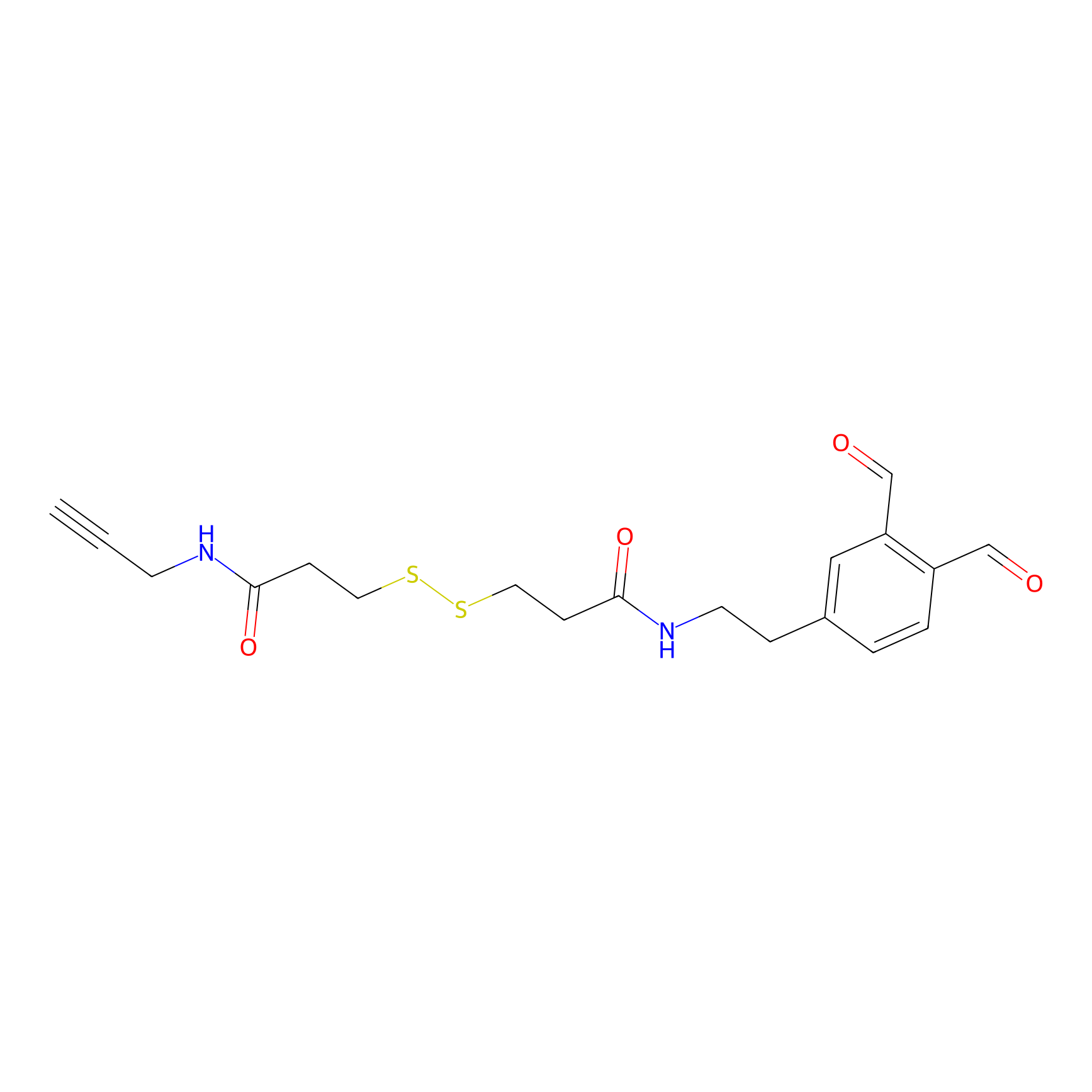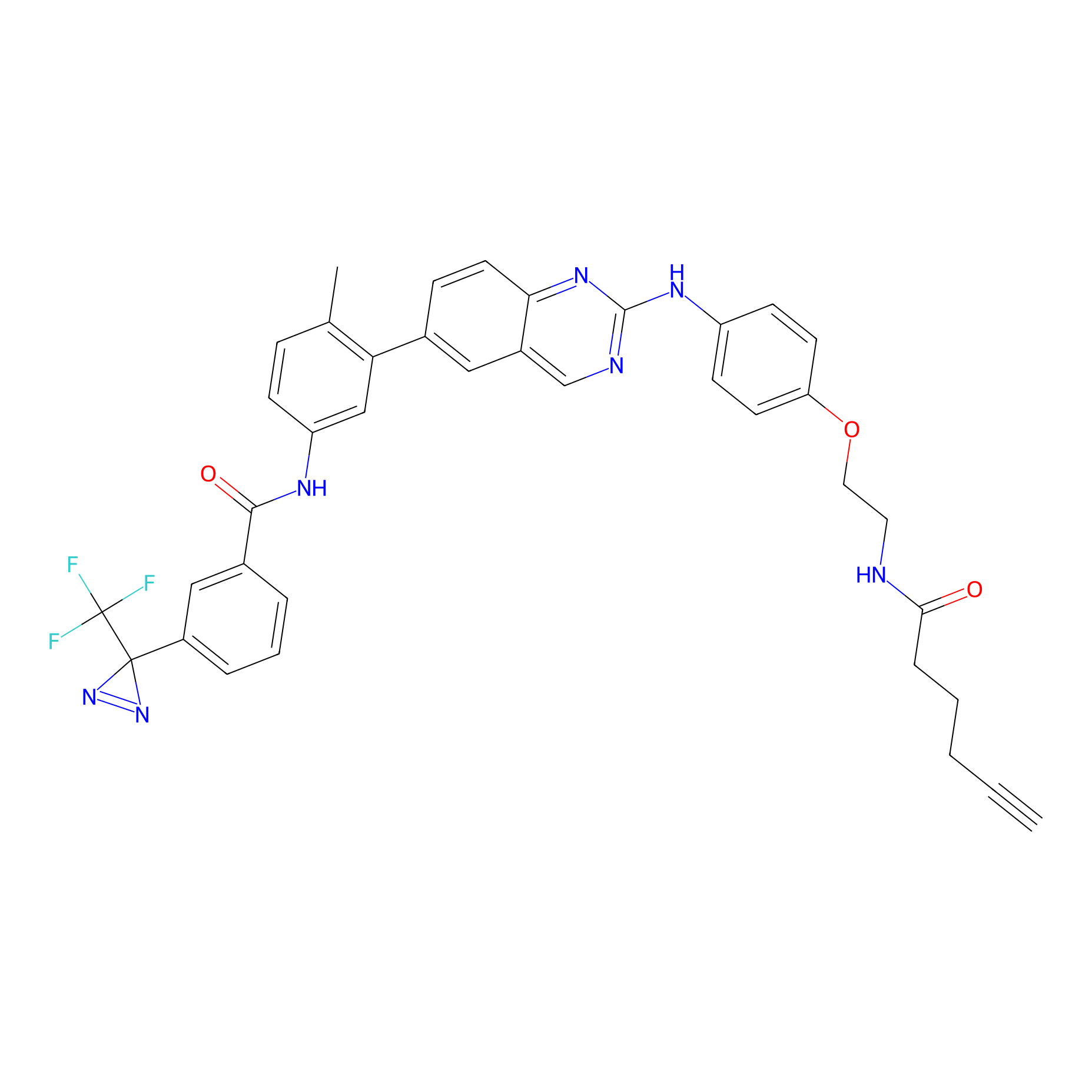Details of the Target
General Information of Target
Target Site Mutations in Different Cell Lines
| Cell line | Mutation details | Probe for labeling this protein in this cell | |||
|---|---|---|---|---|---|
| CAL148 | SNV: p.M250I | DBIA Probe Info | |||
| CCK81 | SNV: p.L780P | . | |||
| CHL1 | SNV: p.C945F; p.A1083V | . | |||
| COLO679 | SNV: p.G127E | . | |||
| COLO792 | SNV: p.M313I Substitution: p.G730K |
DBIA Probe Info | |||
| FTC133 | SNV: p.V748L | DBIA Probe Info | |||
| GB1 | SNV: p.T394S | DBIA Probe Info | |||
| HCC15 | SNV: p.G816A | DBIA Probe Info | |||
| HCT15 | SNV: p.L369I | . | |||
| HEC1 | SNV: p.L770P | DBIA Probe Info | |||
| HEC1B | SNV: p.L770P | . | |||
| HGC27 | SNV: p.M775I | DBIA Probe Info | |||
| HT | SNV: p.T639A | . | |||
| HT115 | SNV: p.R1273Q | . | |||
| IGR1 | SNV: p.W171Ter | . | |||
| J82 | SNV: p.R1045G | DBIA Probe Info | |||
| JURKAT | SNV: p.N253K; p.M1154V | . | |||
| KELLY | SNV: p.P386S | DBIA Probe Info | |||
| KMS27 | SNV: p.P294Q | . | |||
| KPL1 | SNV: p.Y1242C | DBIA Probe Info | |||
| MCC13 | SNV: p.G127E; p.T1215I | DBIA Probe Info | |||
| MCF7 | SNV: p.Y1242C | . | |||
| MEWO | SNV: p.S449F; p.M766I | DBIA Probe Info | |||
| MFE319 | SNV: p.A978T | DBIA Probe Info | |||
| MOLT4 | SNV: p.A287T | . | |||
| NCIH2172 | SNV: p.G668V | DBIA Probe Info | |||
| NCIH2291 | SNV: p.G107V; p.P309S | DBIA Probe Info | |||
| REH | SNV: p.E1100V | . | |||
| RL952 | SNV: p.D960Y | DBIA Probe Info | |||
| RPMI8226 | SNV: p.F247C | . | |||
| SHP77 | SNV: p.G107V | . | |||
| SNU1 | SNV: p.G511C | DBIA Probe Info | |||
| SUPT1 | SNV: p.A4V | . | |||
Probe(s) Labeling This Target
ABPP Probe
| Probe name | Structure | Binding Site(Ratio) | Interaction ID | Ref | |
|---|---|---|---|---|---|
|
OPA-S-S-alkyne Probe Info |
 |
K109(1.90) | LDD3494 | [1] | |
|
DBIA Probe Info |
 |
C956(2.82) | LDD3310 | [2] | |
PAL-AfBPP Probe
| Probe name | Structure | Binding Site(Ratio) | Interaction ID | Ref | |
|---|---|---|---|---|---|
|
DFG-out-4 Probe Info |
 |
11.00 | LDD0075 | [3] | |
Competitor(s) Related to This Target
The Interaction Atlas With This Target
The Protein(s) Related To This Target
Enzyme
Transporter and channel
| Protein name | Family | Uniprot ID | |||
|---|---|---|---|---|---|
| Heat shock protein HSP 90-beta (HSP90AB1) | Heat shock protein 90 family | P08238 | |||
| Disks large homolog 4 (DLG4) | MAGUK family | P78352 | |||
Immunoglobulin
| Protein name | Family | Uniprot ID | |||
|---|---|---|---|---|---|
| Leucine-rich repeats and immunoglobulin-like domains protein 1 (LRIG1) | . | Q96JA1 | |||
Other
The Drug(s) Related To This Target
Approved
Phase 3
| Drug Name | Drug Type | External ID | |||
|---|---|---|---|---|---|
| Rg7388 | Small molecular drug | D0OC4O | |||
Phase 2
| Drug Name | Drug Type | External ID | |||
|---|---|---|---|---|---|
| Ci-1033 | Small molecular drug | D0YB3W | |||
| Ji-101 | Small molecular drug | D0Z7IW | |||
Phase 1
| Drug Name | Drug Type | External ID | |||
|---|---|---|---|---|---|
| Jnj-26483327 | . | D0U3XL | |||
Investigative
| Drug Name | Drug Type | External ID | |||
|---|---|---|---|---|---|
| Hds-029 | Small molecular drug | D05FFT | |||
| Pmid24915291c38 | Small molecular drug | D06BJG | |||
References
